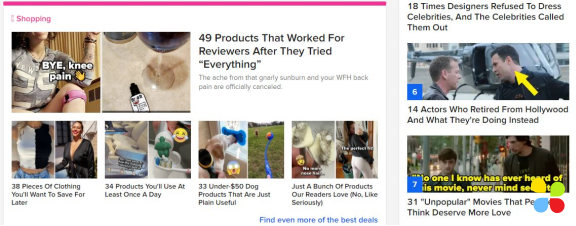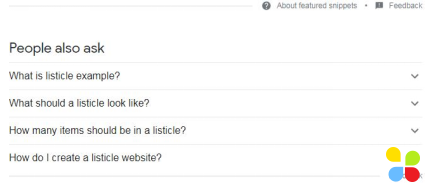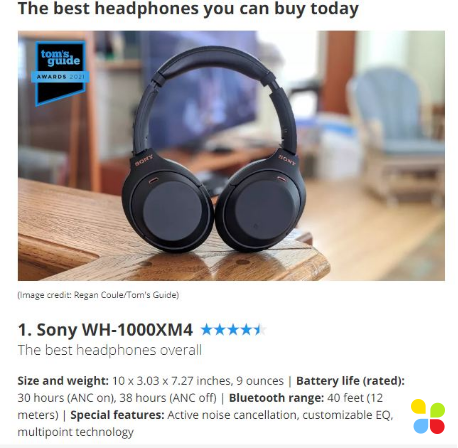
Let’s begin with the basics, so what is a listicle?
A listicle is a blog post presented in form of a list. I’m sure you’ve come across listicles online, probably without realizing that you were reading one. Titles such as “20 Tips for a BBQ Party” or “10 Ways to Improve Your Lawn” – these are listless. You’re probably already familiar with the formats and tones used in listicles. If not, well, this blog you’re reading right now is also in the form of a listicle.
Content creators prefer listicles because they are generally more digestible and readable. Their skimmable nature makes them optimum for readers looking for information quickly. Search engines also love listicles for this very reason.
Contents
- What Is a Listicle, and Why Is It Important?
- Why Do You Need Listicles
- 9 Tips to Creating Your Next Big Listicle
- Choose an Attractive and Interesting Topic
- Don’t Neglect the Formatting
- Include Images to Make It More Attractive
- Pick an Appropriate Style
- Know Your Competition
- Clickbait is Your Enemy
- Don’t Use More than One Page for Your Listicle
- Add a Surprise Element
- Avoid Red Flags
- Concluding Thoughts
What Is a Listicle, and Why Is It Important?
Readers love listicles as much as content creators. Listicles, especially the “how-to” tutorials, have been reported to be the most popular forms of blogs, with 17% of readers preferring them to other forms of content. These types of blogs usually include a Table of Contents, with numbered headings, so it’s easier for readers to navigate through the content.
As mentioned earlier, listicles are blogs that consist of lists. However, what sets them apart is that you’ll find some subtext that explains the context under each heading. You’ll often find listicles on topics that are complicated and relatively hard to understand.
Now content-heavy lisiticles are the need of the hour where information is being passed on. However, depending on your niche, your listicle could just be a collection of images or gifs under each heading or subheading. These lisiticles are usually engagement-centric.
The format of your listicle can be flexible depending on the type of content you’re creating. For example, BuzzFeed does pictures- and gif-based listicles better than most.

Why Do You Need Listicles
If you’re writing a long-form blog, listicles will be easier to comprehend and digest by your readers. Let’s take a look at some other benefits of creating a listicle:
- Readers will know what to expect right from the get-go
- Since they are skimmable, readers can navigate to important information quickly
- Listicles are time-efficient; your readers will know how much of it is still left
- Readers know exactly where they paused and can continue reading at any time
- They break complex information into more manageable bits
9 Tips to Creating Your Next Big Listicle
Well, with that out of the way let’s learn how to make a listicle that will help you gain lots of traction.
Let’s take a look at some of the best practices content writers follow to write an effective listicle:
1. Choose an Attractive and Interesting Topic
Choosing a topic that will gain your readers’ attention is essential for any form of a blog. However, when picking a topic, you also need to make sure it belongs in a listicle’s category and will do the trick in terms of SEO. A quick trends search on Google Trends can give you an idea of what’s trending and what’s not.
Choosing a topic that your customers and readers can relate to is essential. So, to rank higher on the SERP, you must choose a topic that your target market has proven to show interest in. An excellent piece of content can go to waste if it’s not being searched for on search engines like Google.
Speaking of Google, it’s always a good idea to search for your topic on the search engine you want to rank on. Evaluate the formats the top pages on the SERP have used. Doing so will give you an idea of whether or not a listicle would make sense for your chosen topic.
While searching on an engine, reviewing the “People also ask” section will also help. These are the questions that people commonly ask about the topic, and they would help you create an effective outline.

2. Don’t Neglect the Formatting
Needless to say, a listicle involves the use of plenty of self-explanatory headings and sub-headings. These headings make it easier for readers to scan a lengthy list. In addition, if someone’s running short on time, they can understand the context just by reading the headings and skimming through the body of the content.
For headings, the use of H2 and H3 headings is preferable and will make both your readers and Google happy. You can add keywords to these headings to optimize the content for SEO and make your blog rank higher on SERP.
3. Include Images to Make It More Attractive
Adding photos to your blog will automatically make it more attractive for readers. A study concluded that blogs with images get 94% more views than blogs without visuals.
The example below shows what I mean.

These images also have alt tags that are used to describe what the image represents. Alt tags are also another essential component of SEO that will help you rank higher on a results page.
4. Pick an Appropriate Style
There are three different styles of listicles to choose from; standard style, definitive style, and framework style. The first is used for the most basic form of a listicle that doesn’t include much text. It is recommended, however, to use a lot of images for a simple list.
The definitive style focuses on a niche topic and provides a bit more context than just a simple list. These lists are a bit more exhaustive and require a lot more research. Going back to our very first example, “20 Tips for a BBQ Party,” would come under this style.
Unlike the first two styles, the framework style is merely a narrative or a story that is connected through a list. For framework style, the outline or the narrative is created first, and the numbers come later. The number of headings or subheadings in this style is not as significant.
5. Know Your Competition
Of course, to rank higher on SERP, you need to know what quality and quantity you have to beat. If the competitor pages ranking higher than yours have a list consisting of 10 headings, perhaps you can go for 15. However, don’t include irrelevant material for the sake of increasing the numbers in your listicle.
If you can’t increase the numbers, working on the quality of your content will be beneficial. Add more exciting details and information to the blog to make it stand out.
6. Clickbait is Your Enemy
Clickbait will get you clicks – but none that you need. Clickbait should be avoided like the plague unless you’re desperate for views. Clickbaiting will not create any value for your readers, and the chances of them returning to your page will take a hit.
Stay away from sensational headlines which are always more than likely to be misleading. Stuff like, “You Need to Read This to Believe What Happened” or “10 Shocking Ways to Lose Weight – Number 9 will Blow Your Mind” don’t fool anyone anymore.
Most content writers avoid using clickbait because they understand what they are. Look to create value for your customers and create a good brand image.
7. Don’t Use More than One Page for Your Listicle
From a revenue standpoint, creating a listicle that extends to other pages may be great as it increases the revenue you generate from ads. However, if your reader has to navigate to other pages just to see the entire list, it may annoy them. In addition to this, moving the list to other pages will hurt your SEO and decrease its effectiveness.
So, always make sure your list is on one page so it’s easier to navigate and your search engine optimization doesn’t go to waste.

8. Go for Uniqueness: Add a Surprise
If you’re working on a topic that has been written many times, you may find it challenging to make your content piece unique and creative. However, with a little more digging and research, you can come up with one or two surprises.
These surprise elements should be relative to the topic. However, they could also go beyond the generic listicles as long as they add value. Adding surprise elements will not only add to the quality of the information you’re offering but will also help you rank better than your competitors.
9. Avoid Red Flags
We now have answers to “what is a listicle” and what you should do to make your listicle pop. However, there are certain things you should avoid at all costs.
- Vague or confusing titles
- Clickbait
- Irrelevant material
- Not adding a conclusion
- Not adding external links
Content Development Pros Has a Part to Play
There are thousands of listicles online, so to rank higher on SERPs, you will need to conduct thorough research and create content that offers value above and beyond what’ already out there.
That where you can hire ContentDevelopmentPros’ team of article writers to create the perfect listicle for you!
We hope this listicle has helped answer your question, “what is a listicle,” and you’re now better prepared to make every piece of content you publish count.
